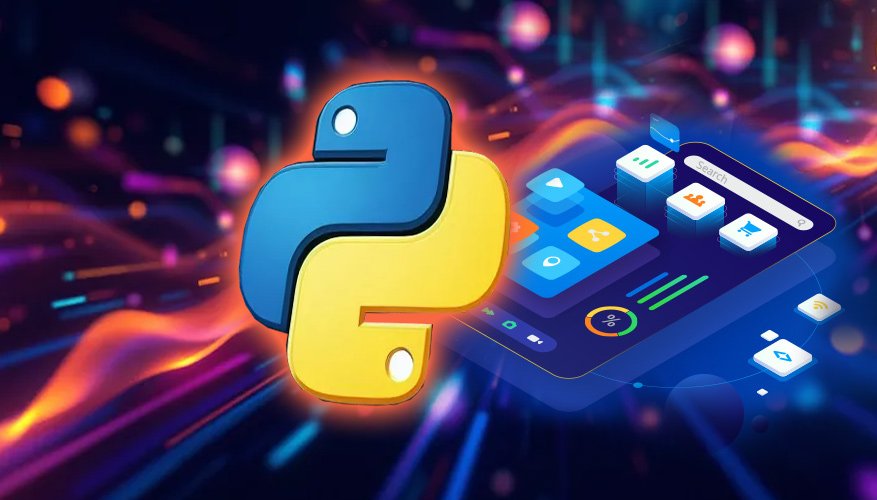Creating mobile apps that work seamlessly on both Android and iOS has traditionally involved learning specific programming languages—like Swift for iOS or Kotlin for Android—or using a cross-platform framework like Flutter or React Native, which still typically requires knowing Dart or JavaScript. For Python developers or beginners who want to build mobile apps without diving into new languages, this can feel like a barrier.
This is where Flet comes in.
Flet is an open-source framework that allows you to build mobile applications entirely in Python. It runs on top of Flutter, a modern UI toolkit from Google, but you never have to write a line of Dart code. Instead, you write your app in Python, and Flet handles the communication with Flutter behind the scenes.
A Python-Based Approach to Mobile App Development
Mobile app development is often seen as complicated, especially for new developers. You need to learn not only how to write the app logic, but also how to design the interface, handle touch input, manage screen sizes, and support both iOS and Android platforms.
Flet simplifies this by offering a single Python codebase that can run on multiple platforms—web, desktop, and mobile—without any significant changes. When you're focusing on building a mobile app, Flet takes care of the rendering engine (via Flutter) and allows you to concentrate on the logic and structure of your app using Python.
This can be a major advantage for Python learners or developers who want to prototype and build mobile apps without the steep learning curve of native mobile development.

What Is Flutter?
Flutter is an open-source UI toolkit developed by Google that allows developers to build beautiful, high-performance applications for Android, iOS, web, and desktop from a single codebase. Unlike many frameworks that rely on native platform components, Flutter uses its own rendering engine, which gives developers precise control over every pixel on the screen. This results in apps that not only look consistent across platforms but also perform smoothly and feel native. Flutter’s declarative UI model, expressive widgets, and strong community support have made it a popular choice for building modern apps quickly and efficiently.
However, Flutter requires developers to write their apps in Dart, a language that—while powerful—is unfamiliar to many. For Python developers or beginners, this extra learning curve can be a barrier. This is where Flet comes in: it brings the power of Flutter’s rendering engine to Python, so you can build cross-platform apps using the language you already know.
How a Flet Mobile App Works
When building a mobile app in Flet, you write Python code that defines your app’s layout and behavior. You use pre-built components like buttons, text inputs, columns, rows, and containers to structure your interface. You also write event-handling functions that define what happens when a user taps a button or enters text.
One of the strengths of Flet is that it uses Flutter’s rendering engine. This ensures your app has a modern, polished look that feels native on both Android and iOS devices. But because Flet exposes all of this through Python, the development process remains accessible even to beginners.

Testing and Running a Flet App
Currently, the most straightforward path to testing Flet apps on mobile is through the web interface. You can run a Flet app locally, access it through a browser on your phone, and interact with it as though it were a native app. This is a useful way to test layout, interactions, and functionality before moving on to more formal packaging for mobile.
Flet apps can be deployed to real Android and iOS devices using tools that package the app together with a Flutter runtime.
Limitations to Keep in Mind
While Flet is a powerful tool, it’s still relatively young and evolving. Native mobile performance is already solid thanks to Flutter, but packaging and distribution for app stores is an area that’s still being actively developed.
That said, for prototyping, building internal tools, learning app development, or even running mobile-friendly web apps that look and feel like native apps, Flet might be your best and easiest choice.

Final Thoughts
Flet opens up the world of mobile app development to Python programmers, especially those who want to focus on app logic and user interaction without learning a completely new ecosystem. It blends the power of Flutter’s interface design with the simplicity and readability of Python.
If you’ve ever wanted to build a mobile app but felt overwhelmed by the tools involved, Flet is worth exploring. You can start writing mobile app logic in Python and see your interface come to life with just a few lines of code.

